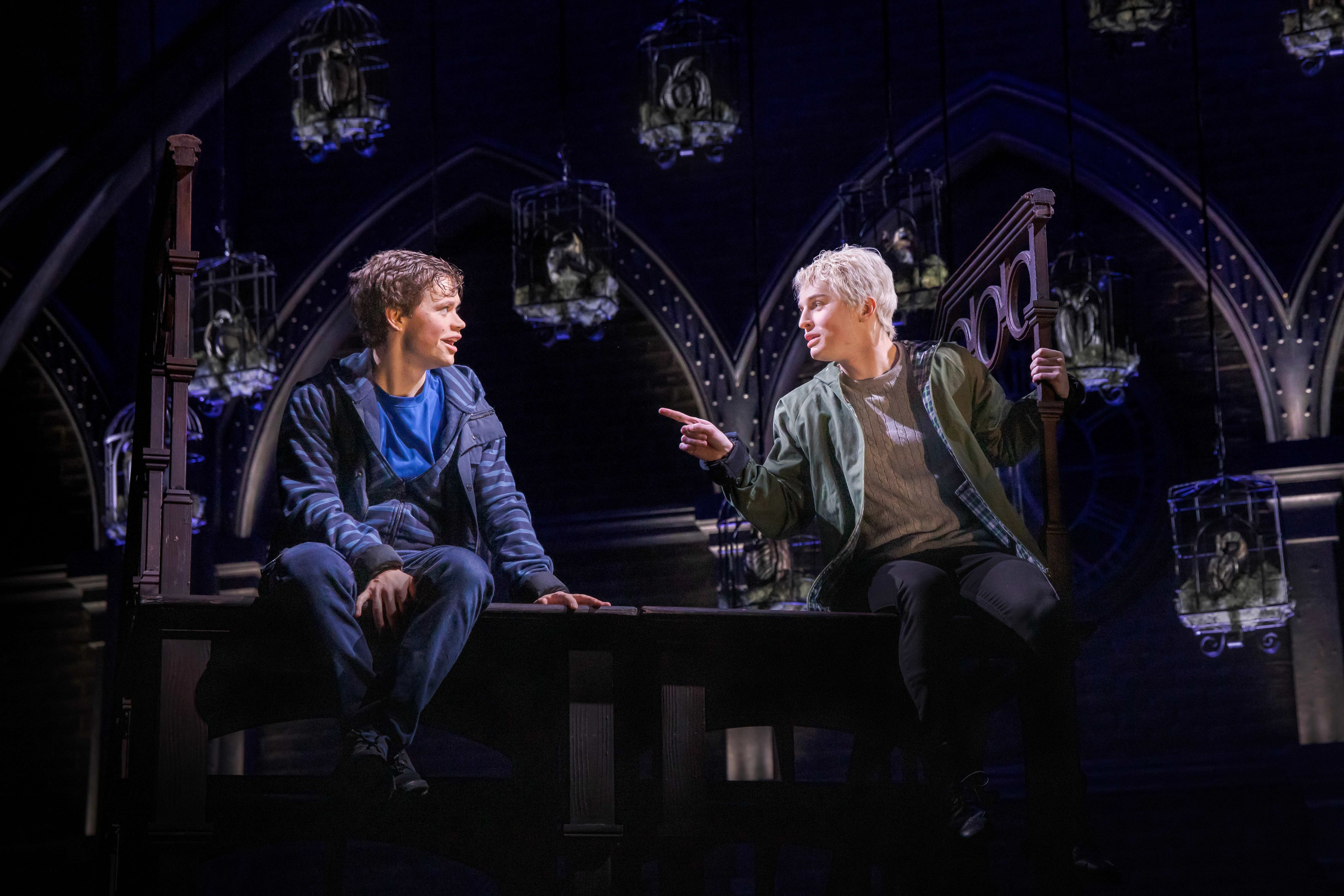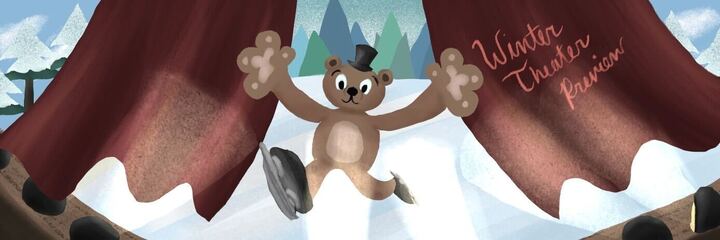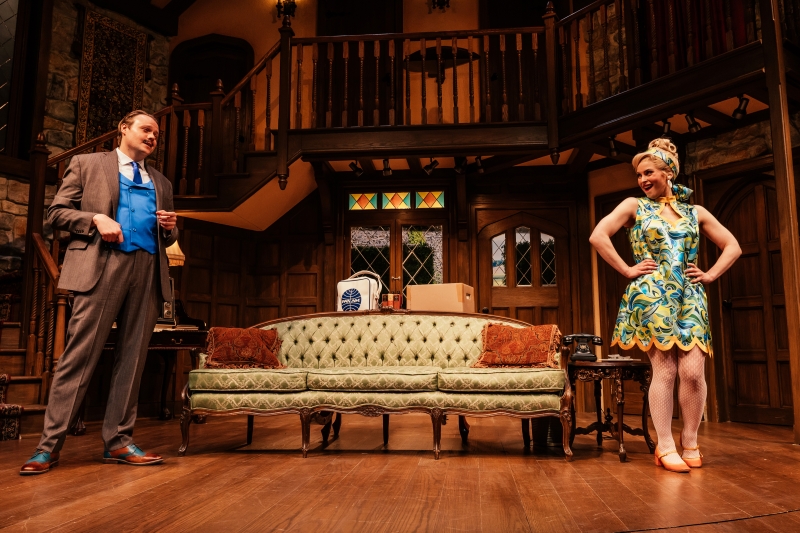Theater review: While lacking good script, ‘Harry Potter and the Cursed Child’ spurs magic onstage

Emmet Smith (left) and Aidan Close (right) play Albus Potter and Scorpius Malfoy, respectively, in “Harry Potter and the Cursed Child.” The play is currently running at the Hollywood Pantages Theatre. (Courtesy of Matthew Murphy)
“Harry Potter and the Cursed Child”
Feb. 15 - June 22
Hollywood Pantages Theatre
$40-$250

By Victoria Munck
Feb. 23, 2025 11:56 a.m.
This post was updated Feb. 25 at 11:28 p.m.
Warning: spoilers ahead.
Despite a few unforgivable curses, “Harry Potter and the Cursed Child” flies high in Los Angeles.
The Tony Award-winning play has Apparated from London to Broadway to LA’s own Hollywood Pantages Theatre, where it will run for over four months. The story takes place 19 years after the events of co-writer J.K. Rowling’s final book in the monumental “Harry Potter” franchise, now centering the titular hero’s son. To give a realistic critique, “Harry Potter and the Cursed Child” is a profit-driven ploy that exploits its deeply devoted following with an underdeveloped, fanfiction-adjacent script. But the wizarding world is anything but realistic, and the magic at the heart of this production outweighs its many flaws. Breathtaking visuals, staggering illusions and conscious direction create an otherworldly experience for fans and nonfans alike, proving that live performance remains the most powerful force of them all.
[Related: Theater review: ‘Back to the Future: The Musical’ makes the future of theater feel bleak]
The first few minutes of the play are among the weakest points in the show, though only partially at the fault of its writers, who cram several years of exposition through rushed transitions. One of the largest challenges for Potterhead viewers to overcome is the act of navigating their own expectations upon the show’s start. For fans of the novels or films, the initial switch to the stage is admittedly jarring, with actors giving their own takes on beloved characters and sets straying from the grandiose, detailed worlds built on screen. As the story unfolds, however, audiences grow familiar with its distinctly theatrical nature and learn to appreciate it as its own work.
The earliest and perhaps most crucial step in setting “Harry Potter and the Cursed Child” apart from its predecessors is its score from Grammy-winning artist Imogen Heap. When it comes to the sound of the franchise, John Williams’ famous, elegant “Hedwig’s Theme” has become inextricably linked to the series – but it does not appear once in the play. Conversely, Heap’s approach to the arrangement leans into electropop, feeling more modern, less cinematic and generally less Potter-esque. While it’s a noticeable change, it is also an easily welcome one: Heap is one of the most genius minds in her field, and her classical training shines through her ability to elevate the script with intensely visceral tracks.
And when Heap’s transcendent score backs Jamie Harrison’s illusion work, the real magic begins. It is hard to verbalize just how beautifully “Harry Potter and the Cursed Child” enchants the eye, bringing countless spells to life with astonishing believability. Audible gasps ring through the theater as objects take flight, witches grow fingers and wizards swap heads. With the highest play budget in Broadway’s history, these various tricks are somehow more impactful on stage than screen despite obvious limitations – witnessing them live among a crowd really heightens the shock.
Harrison is not alone in this craft, however, as impressive efforts from the entire creative team are required to actualize the magic. For example, lighting designer Neil Austin, who won a Tony Award for his work on the show, somehow warps the entire stage when characters interfere with time – a gorgeously immersive effect. The performers, too, deserve more recognition for their hand in the acts, with strong physicality and precise timing needed to pull off various tricks convincingly.
[Related: Theater review: ‘Noises Off’ brings humor to Geffen Playhouse with successfully reimagined script]
With so much to be dazzled by on stage, the play’s producers seem to have forgotten a key ingredient in the potion: a decent script. One could argue that the “Harry Potter” series didn’t need another installment at all, and they would probably be right – but if it needed to happen, it deserved to be good. Instead, “Harry Potter and the Cursed Child” suffers from weak appeals to casual fans and bizarre disruptions of logic established in previous books. This is especially embarrassing for Rowling, who at one point in her career treated the wizarding world with a lot more care.
The script’s greatest flaw is undeniably its overreliance on the Time-Turner, a device used for time travel throughout the series. The tool serves as an easy crutch to revisit the franchise’s most iconic moments – such as the high-stakes Triwizard Tournament – and bring back its most treasured deceased characters – including Severus Snape, Albus Dumbledore and Voldemort – instead of fleshing out a plot with fresh and compelling material. While it’s exciting to see the familiar moments play out onstage, they’re ultimately a waste of time, contributing to a greater injustice against the potential of the story.
And in the moments the writing could really soar, fear seems to hold it back. Much of the story’s heart and charm resides with new characters Albus Potter and Scorpius Malfoy, Harry’s and Draco’s respective sons. They are bright, witty and emotional in ways that match their fathers, and they embody some of the most important themes of the entire series, including identity, legacy and sacrifice. Most interestingly, though, they are overflowing with queer romantic tension that is never adequately addressed. The two boys share several moving moments in which this connection feels unmistakable, but the inability to present it outright clearly stems from the worry of losing an intolerant audience – a cowardly disservice to the characters.
Ahead of the play’s 2016 premiere, Rowling told audiences she was confident live theater was “the only proper medium for the story.” Regardless of how you approach it, she’s correct. “Harry Potter and the Cursed Child” is not fun to read because it is frankly not well-written. And it wouldn’t make a great movie because it doesn’t offer anything an existing film hasn’t already provided. Yet in spite of all this, it is truly, wholly perfect for the stage. The play is a spectacle and genuine delight, and to witness it in person is to be physically moved to tears.
It is an experience only ever achievable in a concrete space, and that is real magic.



